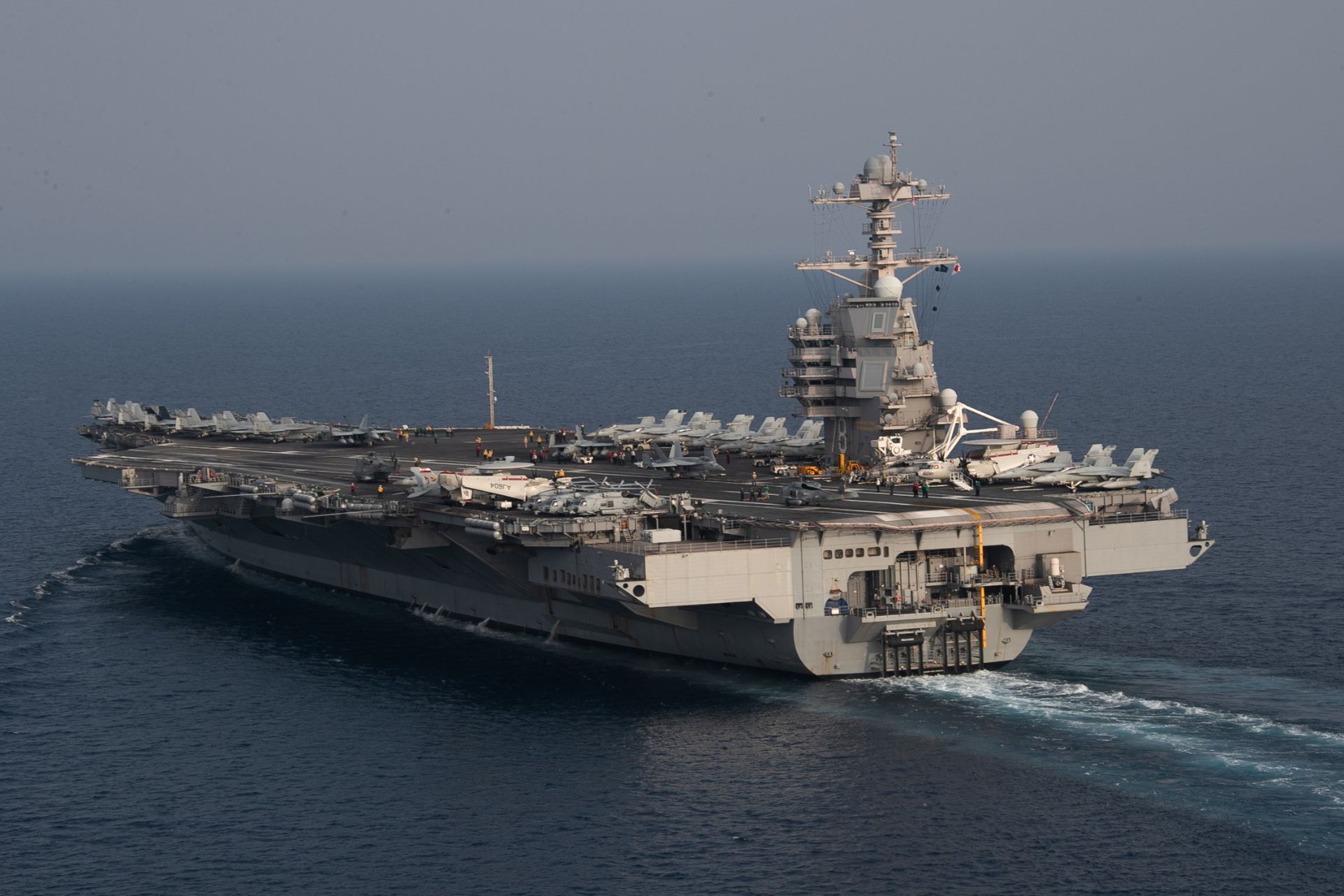Breaking News
US Navy Deploys Starlink on Warships to Enhance Global Connectivity.
The U.S. Navy is on the verge of transforming its fleet's communications through an ambitious project that leverages commercial satellite constellations, including SpaceX's Starlink, as reported by The Warzone. This project, known as Sailor Edge Afloat and Ashore (SEA2), aims to provide high-speed, reliable, and secure internet connections across all U.S. Navy ships, enhancing both operations and crew morale regardless of their location.
Follow Army Recognition on Google News at this link

This system allows ships to securely access low Earth orbit satellites with speeds of 30 to 50 megabits per second, scalable to one gigabit per second with multiple Starlink antennas. (Picture source: US DoD)
SEA2 began aboard the Nimitz-class aircraft carrier USS Abraham Lincoln and is now set to expand across all Navy ships and numerous shore sites. For the past thirty years, ship communications primarily relied on Department of Defense satellites in geostationary orbit, approximately 36,000 kilometers above Earth. While effective, these systems offered slow data rates due to the long distances the signals had to travel.
Existing commercial internet solutions on ships were often makeshift and lacked proper operational authority. The COVID-19 pandemic heightened the need for improved connectivity, as port restrictions cut off access to terrestrial networks, further isolating crews from the rest of the world.
Recent technological advances, particularly with low Earth orbit satellites like those from Starlink and OneWeb, have made faster and more reliable options possible. These constellations, located between 600 and 1,200 kilometers above Earth, offer increased resilience against electronic and physical attacks, making communications more secure in the event of a threat.
For SEA2 to work effectively with these satellites, three key objectives needed to be met: enabling satellite-to-satellite communication through laser links, establishing downlinks to connect shore sites to the internet, and developing a mobility code to keep ships connected while in motion. These challenges were addressed by NAVWAR’s PMW 170 office, which designed the Satellite Terminal (transportable) Non-Geostationary (STtNG). This system allows ships to securely access low Earth orbit satellites with speeds of 30 to 50 megabits per second, scalable to one gigabit per second with multiple Starlink antennas.
SEA2 also incorporates networks like OneWeb and commercial antennas such as Kymeta. This architecture is network-agnostic and can also utilize military communication constellations. From an operational standpoint, constant high-capacity internet availability provides clear benefits, including more reliable communications and streamlined day-to-day operations. Additionally, many tactical computer applications, some designed to handle classified data, are already compatible with commercial internet.
However, SEA2 is not yet fully authorized for transmitting classified data. Nonetheless, even for unclassified information, this system marks a significant improvement, easing logistical operations and other routine military activities.
Beyond operational benefits, SEA2 also brings notable improvements to crew morale at sea. The network now enables more frequent video calls and communications between sailors and their families, as well as access to live television services, such as the February Super Bowl broadcast aboard the USS Abraham Lincoln.
Despite some current limitations, SEA2 represents a critical step forward in enhancing connectivity for U.S. Navy ships, while also paving the way for future developments in communication networks for warships. As interest in commercial satellite internet services grows, this technology is likely to play an increasingly important role in military operations in the future.


























